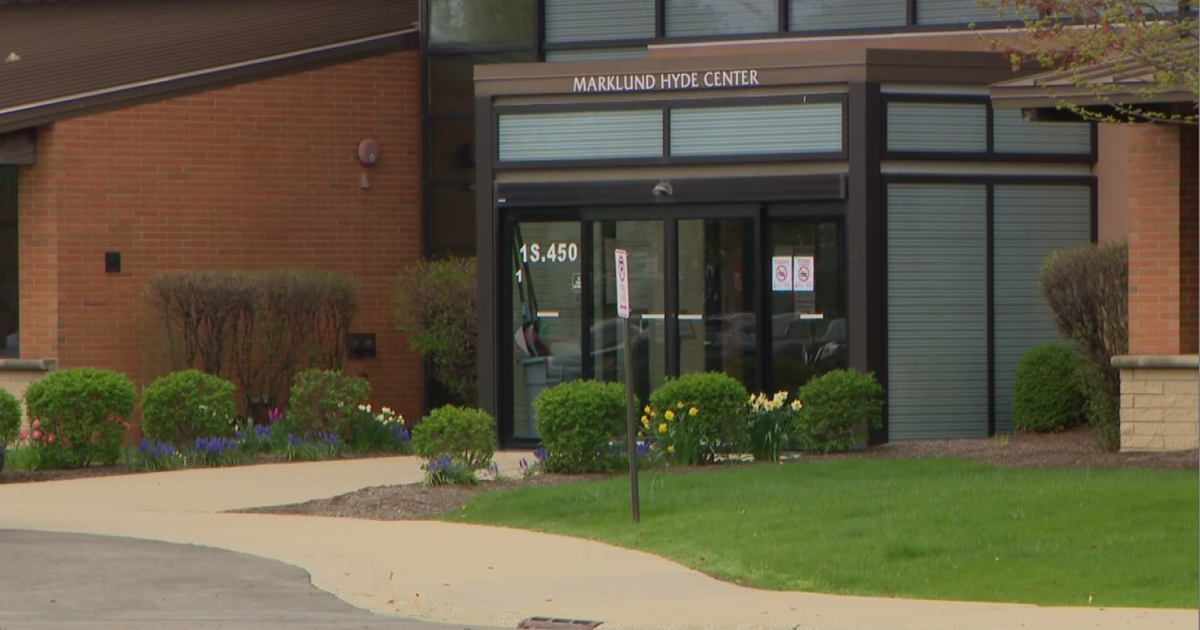5 Things You Should Know About Thyroid Eye Disease
Living with a rare disease can often mean days upon months upon years of searching for answers. Unfortunately, this is the case for many who are living with Thyroid Eye Disease (TED) – a rare autoimmune disease that can cause double vision, eye bulging, pain and constant irritation that can be commonly misdiagnosed for allergies or an infection.1 The good news is that there have been recent advancements in the understanding of the disease, as well as a treatment that has given hope to a community that previously had very few options.
Read on for five things you should know about TED, according to experts.
1. TED and Graves' disease are separate and need different treatments.
TED is most commonly seen in people with Graves' disease – an autoimmune disease that causes hyperthyroidism. In fact, up to half of people with Graves' disease may develop TED - but although they are both autoimmune diseases and can occur at the same time, they are not the same.2 With Graves' disease, the most common type of hyperthyroidism, the immune system mistakenly attacks the thyroid. In TED, the immune system attacks the muscle and fat tissue behind one or both eyes. It's important to know the difference and be sure to seek treatment specifically for TED.
2. Management of TED has come a long way.
Until last year, there were no medicines approved by the U.S. Food and Drug Administration (FDA) to treat TED. Patients were left with very few options for relief - like complex surgeries or eye drops. All of that changed when the FDA approved TEPEZZA® (teprotumumab-trbw) for adults with TED.
TEPEZZA is a prescription, intravenous medicine, also known as an IV medicine – meaning it's delivered through a needle in your arm under supervision of a certified medical professional. TEPEZZA is given once every three weeks for a total of eight infusions, with a full course of treatment lasting about five months. TEPEZZA has been shown to reduce eye bulging and double vision, while also improving the signs and symptoms of TED, including eye pain, redness and swelling.3 Importantly, TEPEZZA treats TED at the source, not just the symptoms.4
"TEPEZZA is now the first treatment I use to help patients early in the course of the disease," says Paul Phelps, M.D., F.A.C.S., Functional & Cosmetic Ophthalmic Plastic Surgery, NorthShore Medical Group. "The improvement in eye bulging and double vision can be dramatic and can help patients look more like themselves."
The most common side effects of TEPEZZA include muscle cramps or spasms, nausea, hair loss, diarrhea, feeling tired, high blood sugar, hearing problems, taste changes, headache, and dry skin. Please see additional Important Safety Information below.
3. Not all eye doctors have experience with TED.
Because TED is a rare and complicated condition, not all doctors are familiar with it nor have experience treating and managing it. If you have TED or are at risk for developing TED, it's important to see a doctor who specializes in the disease – such as an oculoplastic surgeon or a neuro-ophthalmologist – to ensure you receive the right care. Make sure they understand the impact your symptoms are having on daily activities, like making it difficult to drive, work or leave the house.
"People with TED should see a physician who understands the condition and the latest options to manage it," adds Dr. Phelps. "As a TED Specialist, I am glad to be able to educate my patients about different treatment options and what may be the best fit for them."
If TED isn't treated or properly managed, symptoms can linger or worsen and may even result in vision loss, so an early and accurate diagnosis is critical. If you have TED or think you may have TED and are not currently working with a TED Specialist, visit TEDSpecialist.com to find a doctor near you.
4. Symptoms of TED may slow down, but the disease will not go away.
Although symptoms may slow or stabilize, TED is a chronic condition that requires ongoing management. Most people experience two phases – "acute" and "chronic."
In the acute phase (your doctor may call this the "active" phase), symptoms can appear suddenly and worsen quickly. Inflammation and scarring can cause eye bulging, double vision or other symptoms that can impact your appearance and ability to see.
Over time, TED may enter the chronic phase (your doctor may call this the "inactive" phase). Some symptoms, such as redness or swelling, may improve, but others might not go away due to scar tissue from the acute phase. TED Specialists recommend starting treatment as early as possible to reduce eye damage and other complications, but treatment in the chronic phase may still be beneficial.
"TED is a disease that requires ongoing management – your doctor will be able to determine the optimal time for treatment based on where you are in the course of your disease," Dr. Phelps adds.
5. Advocating for yourself and finding a supportive care team is essential.
It can be difficult to find the right support when living with a chronic illness like TED but continuing to seek the right care team is important. If you have TED, it's important to be vocal about your symptoms. Advocacy organizations can also provide TED resources and connect you with others who may have faced similar challenges.
"A TED diagnosis can invoke fear and anxiety. Many patients are concerned about their vision and what could happen to their eyes," says Dr. Phelps. "My advice to people with TED is to talk with your doctor, ask questions about TED and find out more about options, like TEPEZZA, that might be able to help you."
If you are living with TED, know that you are not alone and that you can take action. Advocate for yourself, seek support and find a TED Specialist who can work closely with you to manage your disease and determine if TEPEZZA is right for you.
For more information, visit TEPEZZA.com.
# # #
USE and IMPORTANT SAFETY INFORMATION
What is the most important information I should know about TEPEZZA?
Infusion reactions can happen during or within 24 hours after your infusion of TEPEZZA. If you have a reaction while receiving TEPEZZA, your doctor or nurse will slow or stop your infusion and treat your reaction. If you have a severe infusion reaction, your doctor may stop your treatment completely.
Tell your doctor or nurse right away if you have any of these symptoms during or after your treatment with TEPEZZA:
| • High blood pressure | • Difficulty breathing |
| • Fast heartbeat | • Headache |
| • Redness of the face/Feeling hot | • Muscle pain |
If you have inflammatory bowel disease (IBD), such as Crohn's disease or ulcerative colitis, TEPEZZA may make your IBD symptoms worse. Symptoms of worsening IBD may include: an increased number of loose stools with stomach pain or cramps, and blood in your stools. After each TEPEZZA infusion, tell your doctor right away if you have worsening IBD symptoms.
TEPEZZA may cause an increase in your blood sugar. Before starting treatment with TEPEZZA, tell your doctor if you are currently being treated for diabetes, know your blood sugar is high, or have been diagnosed with diabetes. It is important for you to take your treatments and follow an appropriate diet for glucose control as prescribed by your doctor.
Before receiving TEPEZZA, tell your doctor if you:
- Have inflammatory bowel disease (Crohn's disease or ulcerative colitis).
- Are currently being treated for diabetes, have been diagnosed with diabetes, or know your blood sugar is high.
- Are pregnant or plan to become pregnant. TEPEZZA may harm your unborn baby. Tell your doctor if you become pregnant or suspect you are pregnant during treatment with TEPEZZA.
- Women who are able to become pregnant should use an effective form of birth control (contraception) prior to starting treatment, during treatment and for at least 6 months after the final dose of TEPEZZA.
- Are breastfeeding or plan to breastfeed. It is not known if TEPEZZA passes into your breast milk. Talk to your doctor about the best ways to feed your baby during treatment with TEPEZZA.
- Tell your doctor about all the medicines you take, including prescription and over the counter medicines, vitamins, dietary and herbal supplements. Know the medicines you take. Keep a list of them to show your doctor and pharmacist when you get a new medicine.
What are the possible side effects of TEPEZZA?
The most common side effects of TEPEZZA include muscle cramps or spasms, nausea, hair loss, diarrhea, feeling tired, high blood sugar, hearing problems, taste changes, headache, and dry skin.
This is not a complete list of all possible side effects. Tell your doctor or treatment team if you have any side effect that bothers you or that does not go away.
Please see Full Prescribing information at TEPEZZA.com.
You are encouraged to report negative side effects of prescription drugs to the FDA.
Visit www.fda.gov/safety/medwatch, or call the FDA at 1-800-FDA-1088.
USE
TEPEZZA is a prescription medicine used to treat Thyroid Eye Disease.
References
[1] TEPEZZA. Thyroid Eye Disease FAQs. Retrieved from: https://www.tepezza.com/thyroid-eye-disease/frequently-asked-questions. Accessed August 2021.
[2] TEPEZZA. Thyroid Eye Disease vs Graves' Disease. Retrieved from: https://www.tepezza.com/thyroid-eye-disease/. Accessed August 2021.
[3] TEPEZZA. How TEPEZZA Can Help Thyroid Eye Disease. Retrieved from: https://www.tepezza.com/about-tepezza/. Accessed August 2021.
[4] TEPEZZA. How TEPEZZA Works. Retrieved from: https://www.tepezza.com/about-tepezza/how-does-tepezza-work-on-thyroid-eye-disease. Accessed August 2021.




